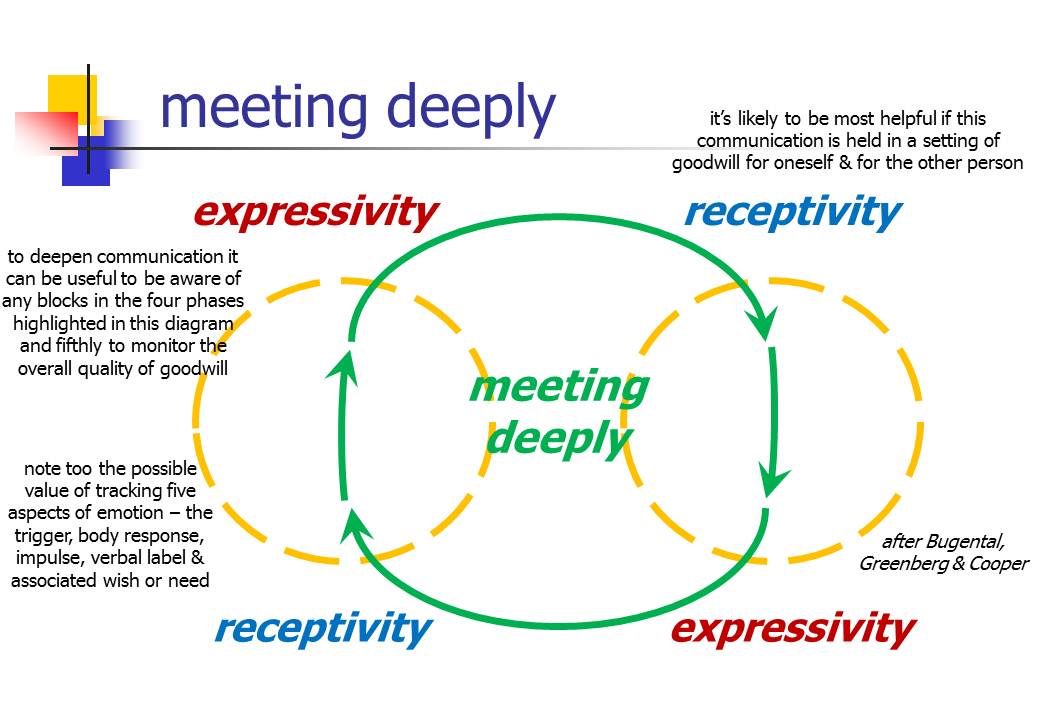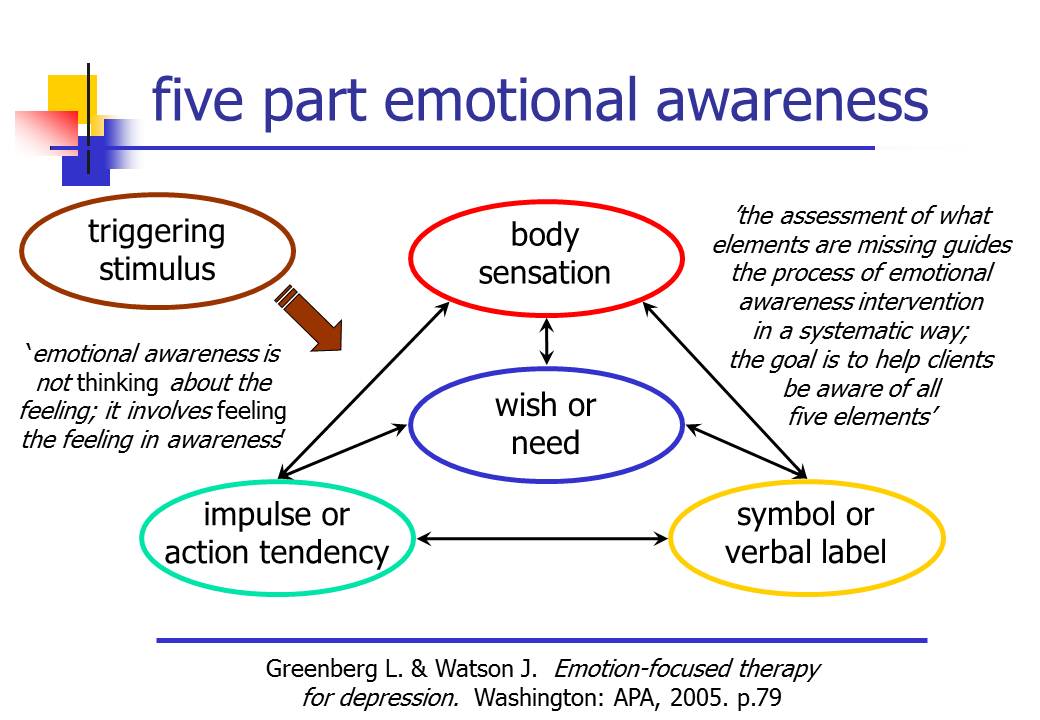Meeting at relational depth: a model
Last updated on 24th September 2014
I went to a workshop on Saturday about "Relational depth". As is usually the case, chewing over the material afterwards, thinking about how it's relevant for myself & my work, following up some leads - these seem crucial activities to promote "digestion" rather than a quick learning meal that goes right through me providing no "nutritional value". One of the ideas that I enjoyed was a slight refocus of the classic person-centred triad - authenticity, empathy, unconditional positive regard - so that the relationship between the people involved became more foreground and the individuals a little more background. I put together a slightly adapted version of one of the facilitator, Mick Cooper's handouts. It looks like this:

You can download both Powerpoint and PDF files of this diagram.
As a therapist, it's usually very important to help create the overall "hold" of goodwill while working on one's "receptivity" and empathically encouraging one's client's "expressivity". It's no surprise that mindfulness training can help therapists become more helpful in their work. And I agree with Les Greenberg that authentic "expressivity" in caring relationships is best held in a frame of goodwill.
It may seem a bit tricky to get one's head round initially, but Greenberg's 5 aspects of emotion diagram (below) can be very helpful both if I'm trying to help another person (e.g. one's client or friend) explore their feelings (and the implications of their feelings) more fully ... and it can also be a useful aide-memoire when connecting to what's going on in myself.

You can download both Powerpoint & PDF files of this diagram.
In close friendships, with one's partner, and in one's family this dance of encouraging/listening for the other's "expressivity" while opening one's own "receptivity" seems often the best way to start this cycle of deepening connection. Then having the internal perceptiveness, an ability to articulate one's experience, and courage is crucial for deeper "expressivity" - but again (as with therapeutic work) this deepening cycle of meeting is nearly always best held in a setting of goodwill for the other person & oneself.
It's worth remembering when working with feelings that an impulse (or action tendency) is certainly not always constructive. Emotions typically involve a response to an external (or internal) triggering event. Hopefully the action tendency will be adaptive, but sometimes it won't be ... and it won't really serve our underlying needs. Often in this situation, the emotion has been unhelpfully coloured by previous experiences in our lives - "The walls we build to defend ourselves become the prisons in which we live". In this situation "emotional processing" is a more appropriate response to our feelings than using them to fuel some reaction to what is happening. See the diagrams "Emotions, arriving & leaving" for more on this.
But overall, deep meeting is like having another gear to one's car, another level in one's relationships and one's life. It's typically a "flow state" with all the joy and timelessness this entails. And close relationships where one has had a series of meetings at this depth seem to become coloured and made more precious by these shared experiences.
If you'd like to download both the diagrams (above) & some added text that can be used as a handout, click on either Powerpoint (best
printed out as two slides to a page) or PDF file (again gives two slides to a page, but colours a bit less sharp than on Powerpoint).
